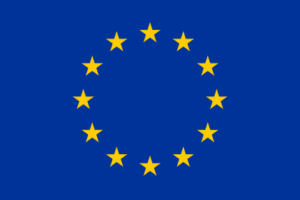Stakeholder engagement is crucial when it comes to the implementation of a citizen science project. In fact, one of the essential aspects of citizen science, is precisely that of including more stakeholders than traditional science does. This is why, in all five citizen science initiatives (CSIs), STEP CHANGE will make a considerable effort to mobilise diverse groups of stakeholders, not only to build on their valuable expertise, but also to increase relevance to a diverse set of social groups, and provide the opportunity to integrate their needs in an inclusive perspective.
To identify social barriers and drivers of tenant electricity in Germany, Women Engage for a Common Future (WECF) is engaging a wide range of stakeholders both at the regional and national levels, notably energy cooperatives, academia, energy providers and SMEs working in the field of renewable energy, as well as the public sector and policymakers. A crucial role is played by energy cooperatives, “key actors in the decentralization and social acceptance of renewable energies and, therefore, a primary stakeholder when it comes to our Citizen Science Initiative – explains Marcela Noreña, co-leader of the CSI on energy communities –. They not only provide us with access to tenant electricity projects, but also facilitate contact with their members”. The energy cooperatives have in fact acted as intermediaries for the recruitment of citizen scientists, and this has allowed WECF to target a specific group of citizens that meets the requirements for participation in the CSI. In addition, policymakers and the public sector are part of WECF’s stakeholder engagement strategy. “Local and national authorities can gain a better understanding of tenant electricity and use the results of the research in the planning of strategies for the scaling-up of decentralized energy solutions”, stresses Noreña.
Academia and public authorities are part of the stakeholder engagement strategy that ARUWE is implementing in Uganda, where knowledge about the impact of renewable energy technology for productive use in agriculture will be developed. Inception meetings have been held with district leadership in Kiboga, Luwero and Kyankwanzi, while Ndejje University has an active role in the research design, delivery of technical guidance and tool development. Joint planning and consultative engagements with international organisations such as GIZ Uganda and DGRV have taken place during the research design phase, while cooperatives and community members will hold a relevant role in the provision of data. Which in times of COVID-19 does not come without effort, explains Agnes Mirembe, Executive Director at ARUWE. “Some of the stakeholders, especially the communities, are in remote areas with a limited access to the Internet. This has delayed and considerably reduced the number of engagements being held”. Whenever possible, virtual meetings and the use of social media have offered good compromises to get in touch with them.
The mountaineering society, nature photographers, outdoor enthusiasts, farmers and university students are amongst the main stakeholders that the University of Primorska would like to engage in the framework of the CSI they are leading, focusing on wildlife conservation in Slovenia. “So far, in our activities – explains Laura Iacolina, Assistant Professor –, we’ve only involved the Hunting Association of Slovenia, since they are actively contributing to the development of the mobile app for wildlife monitoring that will be the core of our CSI”. When it comes to the application for wildlife data collection, which will be developed as an easy tool for the involvement of non-professional citizens, one of the main challenges has been “to find a common ground with the scientific board of the Hunting Association of Slovenia about the optimal design and layout of the app – adds Iacolina –. That’s partly because the app will target two groups of users, hunters and non-hunters, and it should be hence tailored on their different needs”.
General practitioners, NGOs and schools will be involved both in the planning and the implementation of the CSI on infectious disease outbreak preparedness, led by the University of Tor Vergata (UNITOV). General practitioners can benefit of a privileged point of view when it comes to the monitoring of the health situation at the local level, and this is why “we will involve them in activities such as data collection and analysis, and in the identification of research questions from citizens – underlines Carla Montesano, Professor –. We will build on the experience they gained during the COVID-19 epidemic phase as well as when it comes to gathering data from convalescent individuals”. UNITOV will also engage with NGOs that are already involved in serosurvey campaigns in Rome and in Africa, to utilize their previous experiences as a basis for further developments. “We are establishing synergies with local schools too, such as the Liceo Amaldi – continues Montesano –. Our aim is involving students and teachers in literature review and taxonomy building, but also in the promotion of our work”. Other local stakeholders, such as Frascati Scienza and the Italian Geographic Society, will respectively contribute to the recruitment of citizens and the provision of information about the geographical spread of infection.
The NIHR Oxford Biomedical Research Centre, leading the CSI on non-alcoholic fatty liver disease, plans to engage with healthcare professionals, patient associations, charities, local public health authorities, as well as with associations and professional societies involved in the study of liver diseases, such as the British Association for the Study of the Liver. Stakeholder engagement not only will provide useful information for the development of the metabolic endocrinology translational research experiment, but also will nurture a wider debate on the public health issues such as obesity, diabetes, and liver disease, connected with the CSI. “Stakeholders have been involved in the finalisation of the research design of the study. The experiment design has been presented and discussed with the BRC Public and Patient Involvement panel, which includes patients, carers and members of the public. The study design was updated in the light of their feedback”, – explains Professor Jeremy Tomlinson, co-investigator and lead clinical scientist. Synergies have also been established with the Oxford BioBank group, which has helped in the recruitment of study participants.

